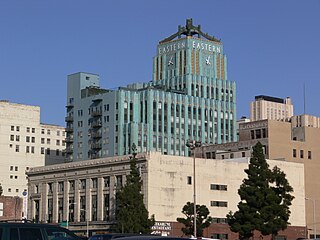
The Historic Core is a district within Downtown Los Angeles that includes the world's largest concentration of movie palaces, former large department stores, and office towers, all built chiefly between 1907 and 1931. Within it lie the Broadway Theater District and the Spring Street historic financial district, and in its west it overlaps with the Jewelry District and in its east with Skid Row.

Broadway, until 1890 Fort Street, is a thoroughfare in Los Angeles County, California, United States. The portion of Broadway from 3rd to 9th streets, in the Historic Core of Downtown Los Angeles, was the city's main commercial street from the 1910s until World War II, and is the location of the Broadway Theater and Commercial District, the first and largest historic theater district listed on the National Register of Historic Places (NRHP). With twelve movie palaces located along a six-block stretch of Broadway, it is the only large concentration of movie palaces left in the United States.

George Edwin Bergstrom was an American architect who designed The Pentagon in Arlington County, Virginia.
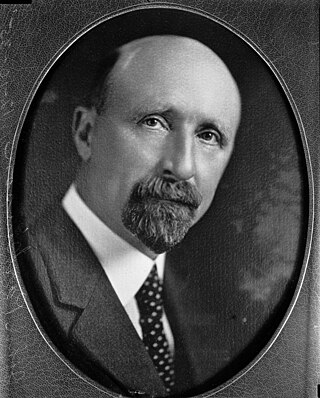
John and Donald Parkinson were a father-and-son architectural firm operating in the Los Angeles area in the early 20th century. They designed and built many of the city's iconic buildings, including Grand Central Market, the Memorial Coliseum and the City Hall.

The Los Angeles Chinese massacre of 1871 was a racial massacre targeting Chinese immigrants in Los Angeles, California, United States that occurred on October 24, 1871. Approximately 500 white and Latino Americans attacked, harassed, robbed, and murdered the ethnic Chinese residents in what is today referred to as the old Chinatown neighborhood. The massacre took place on Calle de los Negros, also referred to as "Negro Alley". The mob gathered after hearing that a policeman and a rancher had been killed as a result of a conflict between rival tongs, the Nin Yung, and Hong Chow. As news of their death spread across the city, fueling rumors that the Chinese community "were killing whites wholesale", more men gathered around the boundaries of Negro Alley. A few 21st-century sources have described this as the largest mass lynching in American history.

Isaac Newton Van Nuys was an American businessman, farmer and rancher who owned the entire southern portion of the San Fernando Valley, an area 15 miles long and 6 miles wide. With the approach of the Owens River aqueduct and the possibility of intensive small farming, Los Angeles speculators, including Harry Chandler of the Los Angeles Times, combined to buy out Van Nuys in 1909 and develop the San Fernando Valley.
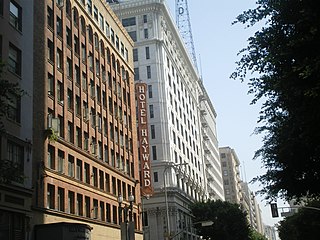
Spring Street in Los Angeles is one of the oldest streets in the city. Along Spring Street in Downtown Los Angeles, from just north of Fourth Street to just south of Seventh Street is the NRHP-listed Spring Street Financial District, nicknamed Wall Street of the West, lined with Beaux Arts buildings and currently experiencing gentrification. This section forms part of the Historic Core district of Downtown, together with portions of Hill, Broadway, Main and Los Angeles streets.

Mission Acres was a rural community in the northern San Fernando Valley. Its historic boundaries correspond roughly with the former community of Sepulveda and present day community of North Hills within Los Angeles, California. The community's western border was Bull Creek, which flowed south out of Box Canyon in the western San Gabriel Mountains near San Fernando Pass.
Thomas Pascoe (1847–1938) was an Englishman who initially worked in the Royal Navy for seven years and also witnessed the opening of the Suez canal. After he left the naval service, he migrated to the United States, where he became a hotel developer and proprietor in California.

James Boon Lankershim was an American heir, landowner and real estate developer.

The Blackstone Building is a 1916 structure located at 901 South Broadway in Los Angeles, California. It has been listed as a Los Angeles Historic-Cultural Monument since 2003. The Blackstone Department Store Building is an early example of the work of John B. Parkinson, Los Angeles’ preeminent architect of the early 20th century, who also designed Bullocks Wilshire. The building is clad in gray terra cotta and styled in the Beaux Arts school.

Edward Kern (1860–1912) was a politician and police chief from Los Angeles, California. He also served in the war against Geronimo.

The Fifth Street Store was a major department store in Los Angeles opened in 1905.
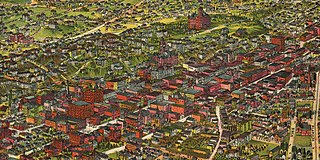
The late-Victorian-era Downtown of Los Angeles in 1880 was centered at the southern end of the Los Angeles Plaza area, and over the next two decades, it extended south and west along Main Street, Spring Street, and Broadway towards Third Street. Most of the 19th-century buildings no longer exist, surviving only in the Plaza area or south of Second Street. The rest were demolished to make way for the Civic Center district with City Hall, numerous courthouses, and other municipal, county, state and federal buildings, and Times Mirror Square. This article covers that area, between the Plaza, 3rd St., Los Angeles St., and Broadway, during the period 1880 through the period of demolition (1920s–1950s).

7th Street is a street in Los Angeles, California running from S. Norton Ave in Mid-Wilshire through Downtown Los Angeles. It goes all the way to the eastern city limits at Indiana Ave., and the border between Boyle Heights, Los Angeles and East Los Angeles.

Retail in Southern California dates back to its first dry goods store that Jonathan Temple opened in 1827 on Calle Principal, when Los Angeles was still a Mexican village. After the American conquest, as the pueblo grew into a small town surpassing 4,000 population in 1860, dry goods stores continued to open, including the forerunners of what would be local chains. Larger retailers moved progressively further south to the 1880s-1890s Central Business District, which was later razed to become the Civic Center. Starting in the mid-1890s, major stores moved ever southward, first onto Broadway around 3rd, then starting in 1905 to Broadway between 4th and 9th, then starting in 1915 westward onto West Seventh Street up to Figueroa. For half a century Broadway and Seventh streets together formed one of America's largest and busiest downtown shopping districts.

The second Los Angeles federal building in Los Angeles County, California, more formally the United States Post Office and Courthouse, was a government building in the United States was designed by James Knox Taylor ex officio and constructed between 1906 and 1910 on the block bounded by North Main, Spring, New High, and Temple Streets. The location was previously known as the Downey Block.
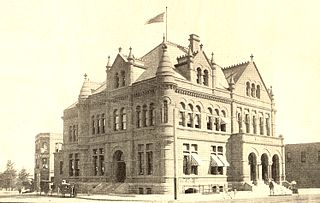
The first Los Angeles federal building, more formally the Los Angeles Federal Courthouse and Post Office or U.S. Post Office and Custom House was a Richardsonian Romanesque red brick, brownstone and terra cotta structure designed by Will A. Freret. The building, located at the corner of Main Street and Winston Street, between Fourth and Fifth Streets, was used for about nine years, from 1892 to 1901, to house the Southern District of California, a U.S. post office, and the customs office. The building was partially demolished in 1901; Court moved to the Tajo Building in the meantime. The post office was housed at a series of locations until the second Los Angeles federal building opened in 1910.

The Tajo Building was a six-story office building on the northwest corner of First and Broadway in downtown Los Angeles, California, in the United States. The building was developed by Simona Martinez Bradbury and named for the Bradbury family's Tajo silver mine in Mexico. The Tajo Building was occupied at various times by the USC Law School, the Los Angeles Stock Exchange and, for the first decade of the 1900s, the United States District Court for the Southern District of California.






















